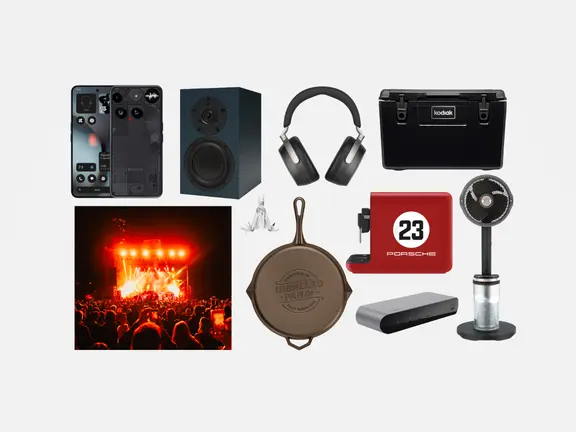
Published:
Readtime: 5 min
Every product is carefully selected by our editors and experts. If you buy from a link, we may earn a commission. Learn more. For more information on how we test products, click here.
Do you seem to be experiencing a midlife crisis at 30? You’re not alone. Pop culture tells us the movement is associated with red sports cars and loose women, but at its core, the midlife crisis is what it says on the tin — a crisis of identity, traditionally experienced at the turn of a person’s fifth decade when there’s likely to be fewer birthday cakes in our future than in our past.
So why are we experiencing the same questions of confidence and asking ourselves ‘who am I?’ at just 30 years of age? Well, it all comes down to change.
In our early years, our lives are pretty well mapped out for us. There’s primary school, then high school, then university or a trade or our first job, and then the true ‘adulting’ begins. We start our career, start a budget so we can pay our bills, and settle into long-term relationships that may or may not turn into lifelong commitments by way of marriage or children. We may even experience the first instances of those around us dying from old age, which begets the question ‘Will I be living a life I would be proud of on my deathbed if I continue on this trajectory?’. It’s a lot!
The midlife crisis stems from the uncertainty that comes at that switch from the moment we are simply going along and doing what all our peers are doing (school, uni, geographic-based friendships), to then needing to self-sustain and carve out our identity through decisions we make about work, relationships, hobbies, and even where we’ll live. We question if we’re on the right path, often comparing our achievements and direction to that of our friends and feeling bad when they achieve something we are yet to. Perhaps most importantly, we question our values.

How Our Values Align With Contentment
Values help us to determine what is most important in our lives and influence our decision-making, often giving us purpose in life. They are the principles by which we live, and we feel our best inside when we stay as true to them as possible. Some examples of values include ‘ambition: desire and determination to achieve success’, ‘commitment: having a dedication to a cause, person, event’, ‘exploration: ‘examining unfamiliar areas, ideas’, and ‘playfulness: being light-hearted, having fun’ (see a full list of values here).
Values start to change as we grow and learn how the world works in relation to ourselves, and this is when we can feel some discomfort. When we feel called to reprioritise our values, it can create friction — especially if what we’re feeling is incongruent with what we’re doing.
For instance, we may have valued ‘strength: having great fortitude under pressure’ when we were younger because that’s what our parents conditioned into us when we were growing up, however now the emotions that come with change in lifestyle feel overwhelming and so there’s a need to prioritise ‘harmony: forming a pleasing consistent whole; balance’ instead. Or, you may have valued ‘loyalty: having strong feelings of support, allegiance’ when you were going through your 20s with your high-school mates.
Now, you realise being loyal is pulling you down a negative path (drugs, crime) and so you feel called to prioritise ‘lawfulness: following the rules set by society, especially law enforcement’ instead. You can see how these could be difficult to navigate, changing friendship groups we’ve always known or beliefs we’ve always held. We’re essentially changing our identity.

Stem Your Identity Crisis by Improving Self-Esteem
Identifying the values that most resonate with us can help us to home in on what it is we want most in life, and reduce the impact of the mid- or quarter life-crisis, leading to improved self-esteem – the way we view ourselves in the world, and how we think of ourselves as a whole person. People with positive self-esteem take pride in their actions and appearance, believe they are capable of reaching their goals, and believe they are worthy and lovable human beings. Those with low or poor self-esteem think the opposite – that they will not amount to much and that they are not worthy of good things such as love. That’s when the crises come to the fore.
Self-esteem is built from both internal and external factors, and is easily influenced by our perception of how others value us in their lives. This is why it’s important to work on our internal self-esteem and reprioritise our values as we move through life changes, so that if something external changes, our self-worth isn’t overly compromised. When we are content with our true selves and living to our values the best we can, other people’s achievements compared to our own will affect us much less.
It was Professor Scott Galloway who coined the term, ‘the arc of happiness’ to demonstrate how we feel throughout the passage of life. We’re happiest as young people, then our happiness dips between 25 and 45 years of age, and then steadily uprises once more – largely in part to those harder milestones we have to navigate, such as mortgages, relationships and careers.
That mid-life is a tough time that we all must navigate (and sooner than our fifties!), made easier when we do so with the right people by our side, living to our values the best we can, especially with a little ‘playfulness’.
About the author: Tammi Miller, therapist and founder of BARE Therapy, and author of Paperback Therapy: Therapist-approved tools and advice for mastering your mental health.


































Comments
We love hearing from you. or to leave a comment.